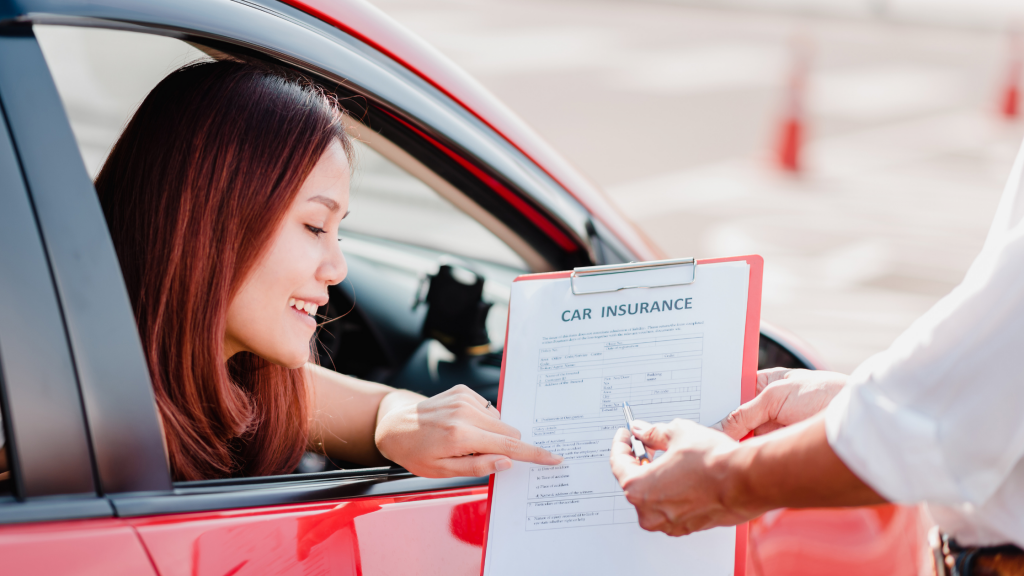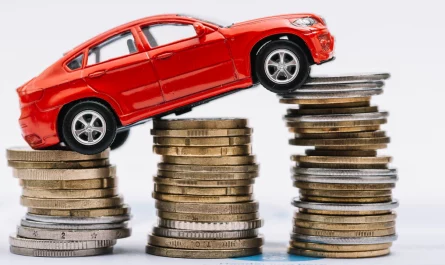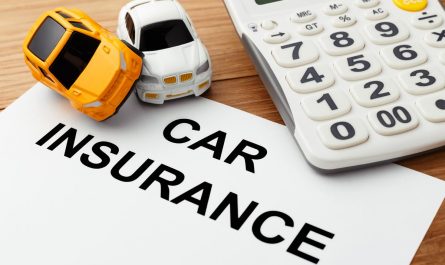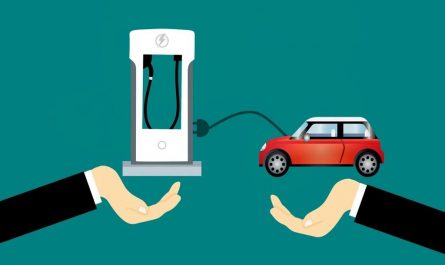Car insurance is an essential element of modern life a necessary safety net that protects you financially in the event of an accident, theft, or unforeseen damage. Yet, not every driver has the same needs. Your driving habits, the type of vehicle you drive, your location, and even your personal financial situation should all factor into how you tailor your insurance policy. In a market where many insurers offer one-size-fits-all policies, customizing your car insurance can result in significant savings and provide a level of protection that is truly aligned with your individual risk profile. This article explores the importance of personalized car insurance, the key components you can customize, and practical tips to help you build a policy that serves you better both on and off the road.
Understanding the Need for Personalization in Car Insurance

For decades, the approach to car insurance was largely uniform drivers chose from a few standard packages that met the minimum legal requirements. However, as technology evolves and consumer lifestyles become more diverse, it has become increasingly clear that this model does not serve everyone equally. Every driver is unique. Some drive daily on busy urban streets, while others use their vehicles only occasionally on quiet country roads. Some vehicles are heavily modified for performance or style, while others are basic models used solely for commuting. Standard policies may cover the basics, but they often fall short in addressing the nuances of your personal situation.
Personalized car insurance goes beyond mere compliance with state regulations. It involves a careful analysis of your driving patterns, vehicle usage, risk factors, and financial capacity to customize coverage limits, deductibles, and optional protections. By tailoring your policy to fit your actual needs, you can avoid overpaying for unnecessary coverages while ensuring that you are adequately protected against the risks that matter most to you.
Insurance personalization is not simply about cutting costs; it is about building a safety net that adapts to your lifestyle. Whether you are a cautious driver who rarely hits the road, a car enthusiast with a customized ride, or someone who uses their vehicle for business, a personalized policy ensures that you are neither underinsured nor paying for coverages you do not need. The result is a more efficient, cost-effective insurance solution that provides better financial security and peace of mind.
Key Elements of a Standard Car Insurance Policy
Before delving into customization, it is important to understand the core components of a typical car insurance policy. Standard policies generally consist of several key elements:
Car insurance usually includes liability coverage, which is mandatory in almost all states. Liability insurance covers the costs associated with injuries or damages you cause to others in an accident. However, the state minimum liability limits may not be sufficient to protect your personal assets, especially in a severe accident. Collision coverage protects your vehicle in the event of an accident, paying for repairs or replacement regardless of fault. Comprehensive coverage handles non-collision related damage such as theft, vandalism, natural disasters, or animal collisions. Additionally, many policies include Personal Injury Protection (PIP) or Medical Payments Coverage, which assists with medical expenses after an accident, and Uninsured/Underinsured Motorist Coverage, which provides protection if the at-fault driver lacks adequate insurance.
While these elements form the backbone of your policy, they are the starting point rather than the end product. Customizing your policy involves adjusting these components and adding optional coverages to create a safety net that is truly reflective of your individual needs.
Customizing Coverage Limits to Match Your Risk Profile
One of the most direct ways to personalize your car insurance is to adjust your coverage limits. Coverage limits dictate the maximum amount your insurer will pay in the event of a claim. When you opt for higher coverage limits than the state minimum, you ensure that you are protected against more severe incidents that could otherwise result in significant out-of-pocket expenses.
For instance, while many states require a minimum liability limit (often something like 50/100/25, which represents the maximum amounts payable per person, per accident, and for property damage), these figures may not provide sufficient protection if you are involved in a major accident. Increasing your liability limits to, say, 250/500/100 or even higher can safeguard your assets by ensuring that you are not left responsible for costs that exceed your policy’s payout.
Furthermore, when considering collision and comprehensive coverage, it is essential to evaluate the value of your vehicle. For a newer or more expensive car, choosing lower deductibles might be wise because the cost to repair or replace the vehicle would be substantial. Conversely, if your car is older or less valuable, a higher deductible might be more appropriate, as it lowers your premium while still offering adequate protection in the event of damage.
By fine-tuning these limits, you are not only customizing your policy but also aligning your financial protection with your personal risk tolerance. Customizing your coverage limits is a balancing act between ensuring sufficient protection and keeping premiums affordable.
Adjusting Deductibles: A Powerful Tool for Premium Management
The deductible is the amount you agree to pay out-of-pocket before your insurance policy begins to pay for a claim. It is one of the most effective levers for controlling your premium costs. A higher deductible generally results in a lower premium because you assume more of the financial risk if an accident occurs. However, this approach requires careful consideration of your financial situation if you choose a deductible that is too high, you may find yourself struggling to cover it if a claim is necessary.
For many drivers, the key is to choose a deductible that represents a level of risk you are comfortable with while still providing significant savings on your monthly or annual premium. Some insurers offer flexible options that allow you to adjust your deductible based on your circumstances. For example, if you are confident in your safe driving habits and have an emergency fund to cover unexpected costs, you might opt for a higher deductible. On the other hand, if you prefer lower out-of-pocket expenses after an accident, selecting a lower deductible might be more appropriate—even if it means paying a slightly higher premium.
This trade-off between deductibles and premiums is central to customizing your policy. It empowers you to manage your expenses in a way that aligns with your financial readiness and risk tolerance, ensuring that you are not caught off guard by an unexpectedly high deductible at the time of a claim.
Optional Coverages and Add-Ons: Enhancing Your Policy to Suit Your Lifestyle
While adjusting core components such as coverage limits and deductibles are critical, optional coverages and add-ons provide the extra layers of protection that can make your policy truly comprehensive. These additional protections allow you to address specific risks that are relevant to your driving habits, vehicle type, and lifestyle.
One popular optional add-on is rental reimbursement coverage. This feature covers the cost of a rental car if your vehicle is in the shop due to a covered claim, ensuring that you are not left without transportation during repairs. For those who rely heavily on their vehicle for work or daily commuting, this coverage can be invaluable.
Another beneficial add-on is roadside assistance. In the event of a breakdown, getting stranded on the road can be both dangerous and inconvenient. Roadside assistance coverage provides services such as towing, battery jumps, and tire changes, offering peace of mind when unexpected mechanical issues occur. For drivers with financed or leased vehicles, gap insurance is an important add-on. If your car is totaled, gap insurance covers the difference between your vehicle’s actual cash value and the remaining balance on your loan or lease, preventing you from facing a large out-of-pocket expense.
Each of these optional coverages plays a role in crafting a policy that reflects your unique circumstances. They allow you to fill in the gaps left by standard policies, ensuring that every potential risk is accounted for without forcing you to pay for coverage you do not need.
Leveraging Telematics and Usage-Based Insurance for Real-Time Savings
The integration of technology into the insurance industry has opened up new avenues for personalization. Telematics, also known as usage-based insurance (UBI), uses devices or mobile apps to monitor your driving behavior in real time. By tracking factors such as speed, braking patterns, mileage, and even the time of day you drive, telematics programs can provide a more accurate assessment of your risk.
Drivers who demonstrate safe driving habits can benefit from substantial discounts on their premiums. For example, programs like Progressive’s Snapshot or Allstate’s Drivewise reward drivers for smooth, cautious driving, effectively lowering their rates over time. For those who do not drive frequently, mileage-based policies can offer even more savings, as your premium is directly tied to how many miles you cover rather than a flat rate.
Beyond cost savings, telematics programs provide valuable insights into your driving habits. Many insurance companies offer feedback through mobile apps, showing you where you can improve and how your driving behavior impacts your premium. This data-driven approach not only helps you save money but also encourages safer driving practices—a win-win situation for both you and your insurer.
The Role of Bundling in Customizing Your Policy
Another effective strategy for personalizing your car insurance is bundling your policies with one provider. Bundling involves purchasing multiple types of insurance such as auto, home, and life insurance from the same insurer. Many companies offer substantial discounts for multi-policy customers, making this an attractive option for those looking to save money without compromising on coverage.
When you bundle your policies, you not only reduce your overall premium but also simplify the management of your insurance products. Having a single point of contact for all your policies can streamline the claims process, provide more consistent customer service, and sometimes even offer added benefits that are not available when policies are purchased separately.
Regularly Reviewing and Updating Your Policy: Staying Aligned with Life Changes
Customization is not a one-time event it is an ongoing process that should evolve as your circumstances change. Life is dynamic, and so are your insurance needs. Whether you experience a major life event, such as buying a new car, moving to a different area, or even changes in your driving habits, it is crucial to periodically review and update your policy.
Regular policy reviews ensure that you are not paying for coverage that is no longer relevant while also ensuring that any new risks are adequately covered. Many experts recommend reviewing your insurance policy at least once a year or whenever a significant change occurs in your life.
For example, if you upgrade your vehicle with custom modifications or add new features, you may need to adjust your comprehensive coverage or add endorsements for custom equipment. Similarly, if your driving habits change—for instance, if you transition from daily commuting to occasional driving you might be able to switch to a mileage-based policy that better reflects your usage.
Practical Tips for Personalizing Your Car Insurance
1. Start with a Comprehensive Self-Assessment
Before making any changes, gather all the necessary information about your current policy, driving history, vehicle details, and financial situation. Evaluate your typical annual mileage, your risk factors, and any modifications you have made to your vehicle. This information forms the foundation of your personalized policy.
2. Use Online Comparison Tools
Leverage online platforms like MoneySuperMarket, Compare the Market, or Confused.com to experiment with different coverage combinations. These tools allow you to adjust deductibles, coverage limits, and add-on features to see how these changes affect your premium. Ensure you input accurate information to get the most reliable quotes.
3. Consult an Independent Insurance Agent
While online tools are useful, speaking with an independent insurance agent can provide personalized insights that you might miss on your own. An experienced agent can help you navigate complex policy language, identify hidden discounts, and tailor your policy to meet both your current and future needs.
4. Experiment with Deductible Options
Test different deductible levels to understand the trade-offs between higher out-of-pocket expenses and lower premiums. Use online calculators to see how adjusting your deductible affects your overall costs. Choose a deductible that aligns with your financial preparedness without leaving you vulnerable in case of a claim.
5. Bundle Where Appropriate
If you have other insurance needs—such as home or life insurance—consider bundling them with your auto insurance. Bundling can lead to significant discounts and a more streamlined insurance experience. Ensure that the bundled policies still offer the level of customization you require for each individual policy.
The Future of Personalized Car Insurance
Real-Time Premium Adjustments:
Insurers are developing systems that can adjust your premium in real time based on your driving behavior. For example, if you consistently demonstrate safe driving through telematics data, your premium may decrease automatically. This dynamic approach ensures that your insurance costs reflect your current risk level, making the policy more responsive and fair.
Behavioral Incentives:
Future policies may incorporate incentives for healthy and safe behavior beyond driving. Integration with wearable devices and health apps could lead to personalized discounts based on your overall lifestyle, such as exercise habits or even sleep patterns. Insurers are exploring ways to reward drivers not just for avoiding accidents, but for maintaining a healthy lifestyle that reduces overall risk.
Integrated Multi-Policy Bundles:
As the insurance industry continues to evolve, we can expect more comprehensive bundles that combine auto, home, and life insurance into a single, personalized package. These integrated solutions will not only provide consistent coverage across all aspects of your life but also offer greater convenience and potentially deeper discounts.
Enhanced Claims Processing:
Artificial intelligence and automation are revolutionizing the claims process, making it faster, more transparent, and more personalized. With AI-driven claims handling, your experience after an accident can be significantly improved, reducing the stress and hassle associated with filing a claim. Personalized policies may include features that allow you to track the progress of your claim in real time, providing greater peace of mind.
Integrating Technology and Personalization: A Closer Look
The future of car insurance is intertwined with technology. Insurers are increasingly turning to advanced tools and platforms to deliver personalized policies. Here are some key technological innovations that are driving this change:
Telematics Devices and Mobile Apps:
Telematics devices, whether built into your vehicle or available through mobile apps, provide real-time data on how you drive. This data includes metrics like acceleration, braking, speed, and even cornering habits. Insurers use this information to calculate a personalized risk score, which in turn affects your premium. Safe drivers can enjoy significant discounts, while those who drive more aggressively may see their rates increase. This real-time feedback loop not only personalizes your insurance but also encourages better driving habits.
Digital Customer Portals:
Many insurers now offer digital customer portals where you can review your policy details, file claims, and even adjust your coverage settings online. These portals provide a seamless, user-friendly experience, making it easier for you to manage your policy and make changes as needed. The convenience of digital tools means that personalization is not a one-time event but an ongoing process that can be adjusted at any time.
Integrated Communication Platforms:
Chatbots and AI-driven customer service platforms are transforming how insurers interact with their customers. These tools can provide instant, personalized advice based on your policy details and current needs. By integrating these platforms into their service offerings, insurers can ensure that you have access to customized support 24/7—whether you need help understanding your policy or want to make a change on the fly.
Bringing It All Together: Crafting Your Ideal Car Insurance Policy

Step 1: Comprehensive Self-Assessment
Begin by gathering all relevant information about your current policy, driving history, and vehicle details. Evaluate your annual mileage, typical driving conditions, and any custom modifications your vehicle may have. This self-assessment forms the basis of your personalization strategy.
Step 2: Prioritize Your Coverage Needs
Determine what aspects of your policy are most important to you. Do you need higher liability limits to protect your assets? Are you willing to accept a higher deductible in exchange for lower premiums? Do you require additional coverages such as rental reimbursement or roadside assistance? Prioritizing these needs helps you focus on the most critical elements of your policy.
Step 3: Utilize Comparison Tools and Consult Experts
Use online comparison tools to explore different coverage combinations. These tools allow you to simulate changes in deductibles, coverage limits, and optional add-ons, providing a clear picture of how each adjustment affects your premium. At the same time, consult with independent insurance agents who can offer personalized advice based on their experience and expertise.
Step 4: Customize Your Policy with Optional Add-Ons
Based on your self-assessment and priority list, add any optional coverages that are relevant to your needs. Whether it’s gap insurance for a financed vehicle, rental reimbursement for business travel, or custom equipment coverage for modified cars, these add-ons ensure that no aspect of your risk profile is left uncovered.
Step 5: Enroll in Telematics Programs
If your insurer offers a telematics program, consider enrolling to take advantage of personalized discounts and real-time feedback on your driving behavior. This not only reduces your premium but also promotes safer driving practices.
Conclusion: The Future is Personalized
The shift towards personalized car insurance represents a significant evolution in how drivers protect themselves and their assets. Gone are the days when drivers had to settle for generic policies that offered minimal protection and limited flexibility. Today, technological advancements, data analytics, and innovative insurance products are making it possible for every driver to design a policy that fits like a glove.
By customizing your car insurance, you are taking control of your financial security. You ensure that you are neither overpaying for unnecessary coverage nor leaving yourself exposed to risks that could have severe financial consequences. Personalized insurance empowers you to make informed decisions, leveraging technology and expert advice to craft a policy that grows with you.
As the insurance industry continues to evolve, the trend towards personalization will only deepen. With real-time premium adjustments, behavioral incentives, integrated digital tools, and advanced data analytics, the car insurance policy of the future will be more dynamic, responsive, and tailored than ever before.
Take the time to assess your needs, explore your options, and invest in a policy that reflects your unique driving profile. With the right approach, you can enjoy substantial savings, enhanced protection, and peace of mind knowing that your insurance is as individualized as you are. Whether you are a daily commuter, a weekend driver, or a car enthusiast with a customized ride, personalized car insurance is the smart choice for a safer, more secure future on the road.



